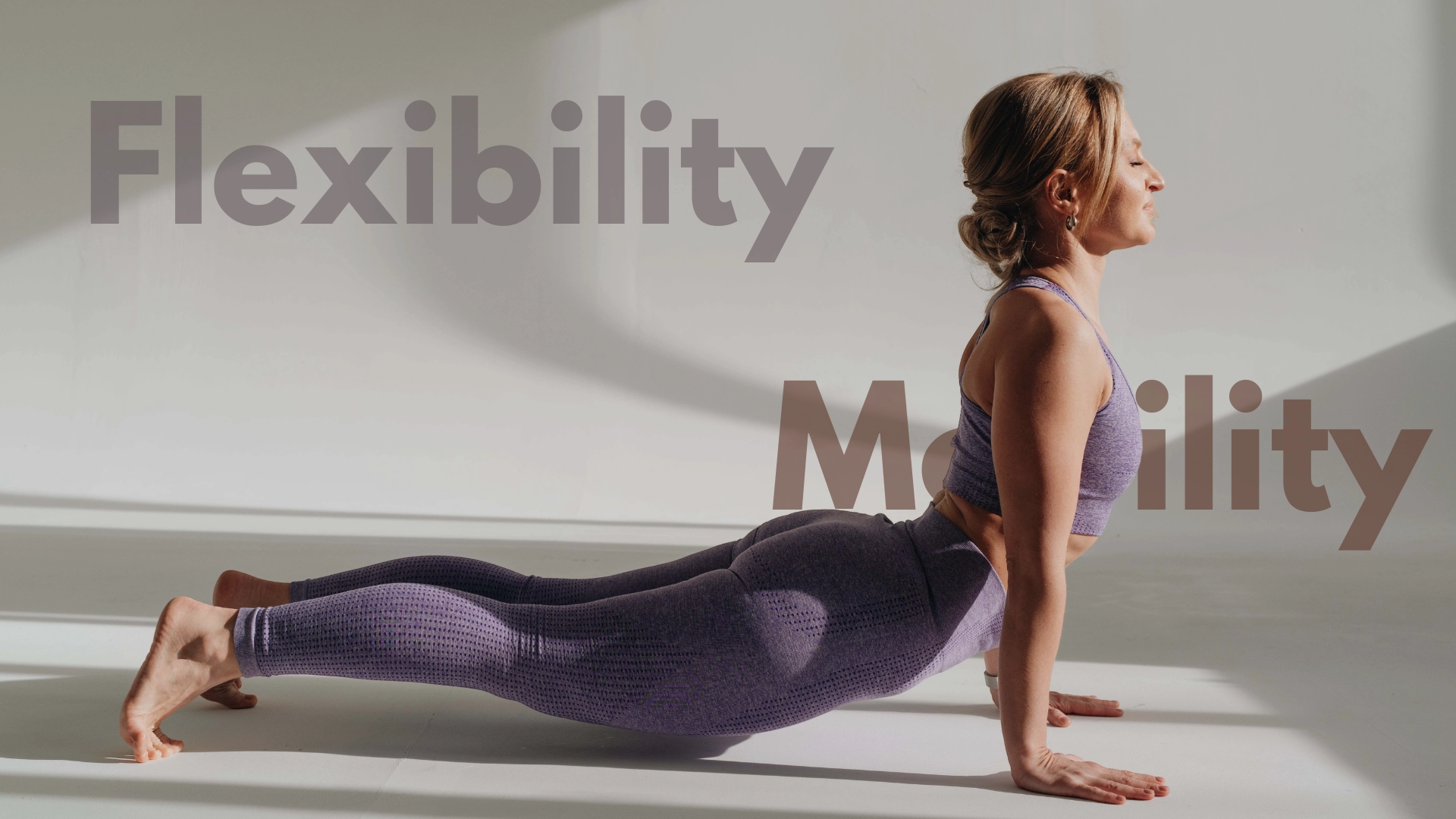The Importance of Flexibility and Mobility in Fitness: 6 Key Benefits and How to Improve
Understanding Flexibility and Mobility in Fitness
- Flexibility refers to the ability of a muscle or muscle group to lengthen passively through a range of motion.
- Mobility is the ability to move a joint through its full range of motion with control.
The Benefits of Improved Flexibility and Mobility

Incorporating flexibility and mobility work into your fitness routine offers numerous advantages:
- Injury Prevention: Flexible muscles and mobile joints are less prone to injuries during exercise and daily activities.
- Enhanced Performance: Greater range of motion allows for more efficient movement patterns, improving your performance in various exercises and sports.
- Better Posture: Flexibility in key muscle groups helps maintain proper alignment, reducing the risk of posture-related pain and discomfort.
- Increased Muscle Efficiency: Muscles that can move through a full range of motion generate more force and require less energy to perform tasks.
- Improved Recovery: Flexible muscles are less likely to become sore and recover faster after intense workouts.
- Stress Relief: Stretching and mobility exercises can help reduce physical and mental tension, promoting overall relaxation.
Incorporating Flexibility and Mobility into Your Routine
1. Dynamic Warm-ups
2. Static Stretching
3. Yoga and Pilates
4. Foam Rolling
5. Mobility-Specific Exercises
Common Mistakes to Avoid

- Overstretching: Pushing too hard can lead to injury. Always stretch to the point of mild tension, not pain.
- Neglecting consistency: Like any aspect of fitness, flexibility and mobility require regular practice to see improvements.
- Ignoring problem areas: Pay extra attention to tight or restricted areas rather than focusing solely on already flexible parts.
The Role of Flexibility and Mobility in Different Fitness Goals

- For Strength Training: Improved mobility allows for better form in exercises like squats and deadlifts, potentially increasing the weight you can lift safely.
- For Endurance Athletes: Enhanced flexibility can improve running economy and reduce the risk of overuse injuries.
- For General Fitness: Better flexibility and mobility contribute to improved overall function in daily activities and a reduced risk of age-related mobility issues.
Measuring Progress

- Regularly performing simple tests like the sit-and-reach or shoulder mobility assessments.
- Taking progress photos of your range of motion in specific exercises.
- Noting any improvements in your performance or reduction in discomfort during workouts.
Conclusion: Making Flexibility and Mobility a Priority
At GrowFit, we think that flexibility and mobility are just two of the many physical health-related components that are addressed in a genuinely effective exercise regimen. By adding these components to your exercises, you’re investing in your long-term health and functionality as well as increasing your performance today.
Recall that increasing your mobility and flexibility requires patience and consistent effort. Treat your body with patience and acknowledge little accomplishments along the road. There’s always space to improve your flexibility and mobility, regardless of your level of experience as an athlete or where you are in your fitness path.
Ready to unlock your body’s full potential? Explore GrowFit’s resources and Let’s work together to create a more flexible, mobile, and resilient you!
FAQ’s
1. What’s the difference between flexibility and mobility?
2. How often should I incorporate flexibility exercises into my routine?
3. Can improving flexibility help prevent injuries?
4. What are some effective ways to improve flexibility?
5. Is it possible to be too flexible?
6. How long should I hold a stretch?
7. Can flexibility exercises help with muscle soreness?
8. Are there any age limitations for improving flexibility?
Also Check out our detailed articles on:
For more information on specific topics covered in this guide, check out these blogs:

